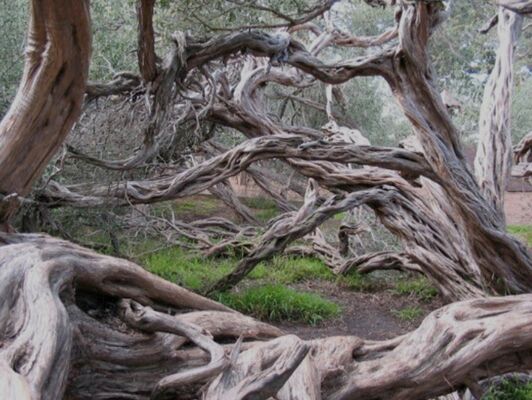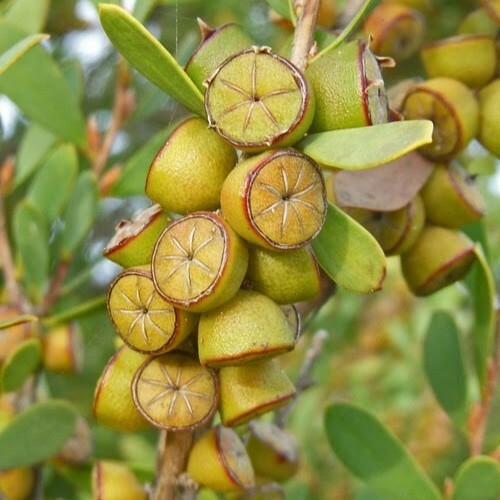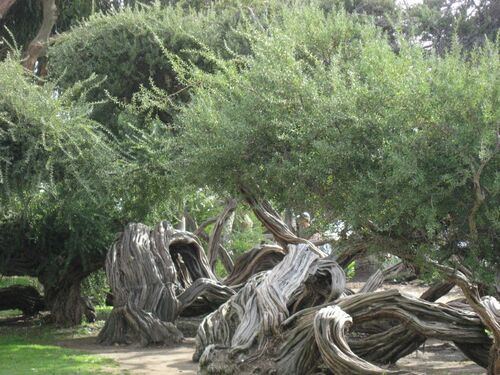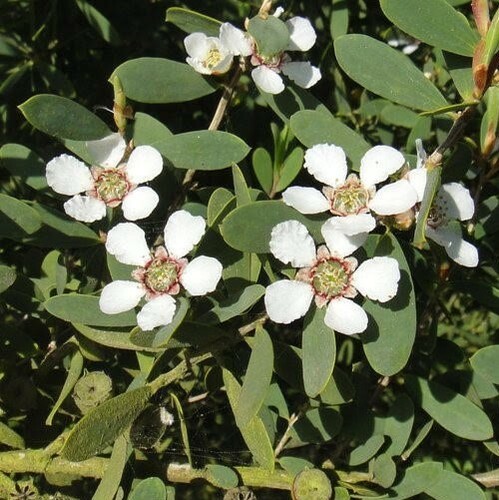San Francisco's Oldest Living Tree Or Shrub? The Case of the 120-Year-Old Australian Tea Tree

Photo by Suzette Hosken
Introduction
There has been some debate over whether San Francisco's oldest living plant, a Leptospermum laevigatum commonly known as an Australian tea tree, should be classified as a tree or a shrub. Here is a discussion of the definitions of trees and shrubs and how they apply to this plant:
Shrubs vs Trees: Definitions
Shrubs are generally defined as woody plants that have multiple stems growing from the base and reach a mature height of up to 15 feet. Trees typically have a single trunk and reach taller mature heights.
However, the distinctions are not always clear-cut. Some definitions focus on size, while others look at wood anatomy or whether plants have persistent woody stems. There are many edge cases of woody plants that don't fit neatly into one category.
The Leptospermum laevigatum
- The Leptospermum growing in San Francisco is estimated to be about 120 years old. It reaches a height of about 12 feet.
- It has multiple woody stems growing from the base, tending to fit the structural definition of a shrub. However, it is also capable of developing a single trunk, so it could be argued to qualify as a tree.
The Disagreement

Botanists have gone back and forth for years about whether this ancient Leptospermum should be called a tree or shrub. There is no scientific consensus.
In the public sphere, it is most commonly referred to as a tree, likely because this designation brings more prestige and public awe to such an elderly living landmark.
Ultimately there may not be a right or wrong answer, as we are dealing with definitions devised by humans rather than natural discrete categories. The Leptospermum resists easy classification, as do many woody plants. Perhaps being a bit of both is what has helped it live so long.
San Franciscans are proud of their city’s historic landmarks and natural wonders. But there is one living landmark that often sparks debate—is it a venerable old tree or a persistent ancient shrub? The plant in question is a Leptospermum laevigatum, commonly known as an Australian tea tree, growing on the southeast slope of Telegraph Hill. With an estimated age of 120 years, it holds the record as San Francisco’s oldest living woody plant.
So why the confusion over whether to call it a tree or a shrub? Let’s examine some defining characteristics and why this tea tree resists straightforward classification.
What Makes a Tree a Tree?
Trees are normally defined as woody plants having a single trunk supporting branches and leaves in a more or less distinct crown. Trees are generally taller than 15 feet at maturity. They typically have secondary growth, meaning the trunk enlarges every year with new wood layered under the bark.
What Defines a Shrub?
Shrubs, on the other hand, are shorter, woody plants, usually ranging from 1 to 15 feet tall at maturity. Rather than a single trunk, shrubs typically have multiple shoots and stems growing from the base. Besides height, shrubs are set apart from trees by their tendency to branch from the base rather than developing a single trunk.
Where Does San Francisco’s Tea Tree Fit In?

An Australian Tea Tree in its Native Environment
The aged tea tree growing on Telegraph Hill is approximately 12 feet tall—placing it on the upper end of average shrub height. It develops multiple woody stems from the base—structural characteristics associated with shrubs. However, tea trees also occasionally form a single trunk, which this plant has done at times in its 120-year lifespan. So in anatomy and growth habit, the tea tree blurs the line between tree and shrub.
Other resilient tea trees around Australia have been known to reach ages of 300 to 400 years. Perhaps the dual abilities to grow as both shrub and tree contribute to the tea tree’s long lifespan.
A Rose by Any Other Name?

Leptospermum laevigatum (Australian tea tree) flowers and leaves. Photo: © 2013 Neal Kramer
San Francisco residents seem inclined to refer to their elderly celebrity plant as a tree rather than a shrub. Its great age and connection to history capture public attention. Perhaps being called a tree lends more gravitas. One might not be so impressed by a 120-year-old shrub!
Of course, the tea tree itself is unconcerned with our human labels. This lasting resident of Telegraph Hill will continue greening the slope, watched over by admirers whether it is called tree or shrub. Its long life and persistence in the face of urbanization make it special—a living link to San Francisco’s past. Perhaps it is the quintessential example of defying straightforward classification and thriving as a woody plant that embodies qualities of both trees and shrubs.
As woody plants that often live for centuries, ancient tea trees require specialized care to remain healthy. Arborist Now is a tree care company dedicated to helping treasured old trees like San Francisco's famous tea tree thrive. Our certified arborists have the expertise to assess aging trees and provide any pruning, cabling, pest management, or other services needed to preserve these links to our past. If this tea tree survives another 100 years, regular care from professionals like those at Arborist Now could make the difference.





